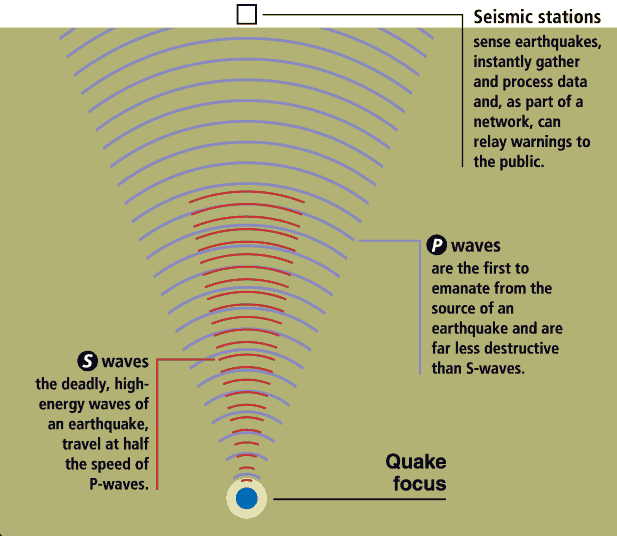
Explain that earthquake waves move particles of material in different ways: whereas, compressional waves create a back and forth motion parallel to the direction of the waves, shear waves create a back and forth motion perpendicular to the direction of the waves.Ĥ. Body waves pass through the interior of the Earth whereas surface waves travel along the Earth's surface. There are different kinds of earthquake waves: body waves and surface waves. These waves are called seismic or earthquake waves. Explain to students that earthquake energy travels in the form of waves. Explain to them that they can feel it because the energy of the hammer blows travels to their fingertips in the form of waves.ģ. Encourage students to guess why they can feel the energy. Students should be able to feel the energy of the hammer in their fingertips. If you have a brick and a hammer, allow students to experiment with them. Use a simple example: Ask students to predict what would happen if they touch one end of a brick and tap the other end with a hammer. Encourage students to discuss how they think the elastic energy travels to the surface of the Earth or whether they think it passes through the entire Earth. Tell students that the released energy can travel through the Earth's interior and along its surface, and that it can put human beings and human structures in danger.Ģ.

Remind students that earthquakes occur when elastic energy is accumulated slowly within the Earth's crust as a result of plate motions and then released suddenly along fractures in the crust called faults. Ask a student to give a definition of an earthquake using the knowledge gained in Lesson 5. This activity is designed for one 1-hour class period.ġ. In addition, students discuss how scientists use earthquake waves to investigate the interior structure of the Earth.

In this lesson, students learn about different types of seismic waves on the basis of where and how the waves move. Therefore, it is critical to understand where this energy is released and in what form. It is this released energy that puts human beings and human structures in danger. The released energy travels in the form of waves called seismic waves. As discussed in Lesson 5, earthquakes occur when elastic energy is accumulated slowly within the Earth's crust as a result of plate motions and then released suddenly at fractures in the crust called faults. Therefore, the earliest solid scientific advances in seismology concerned earthquake waves. The earliest scientists first observed the waves that earthquakes produce before they could accurately describe the nature of earthquakes or their fundamental causes, as discussed in Lessons 1–5.


 0 kommentar(er)
0 kommentar(er)
